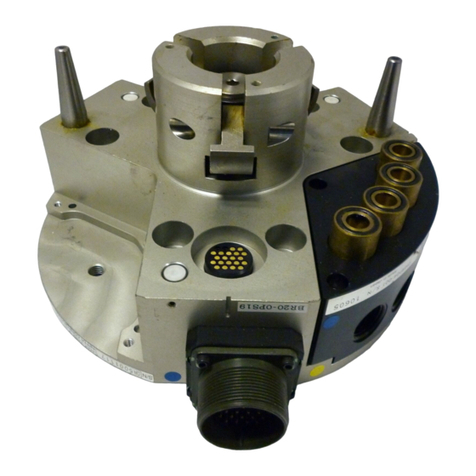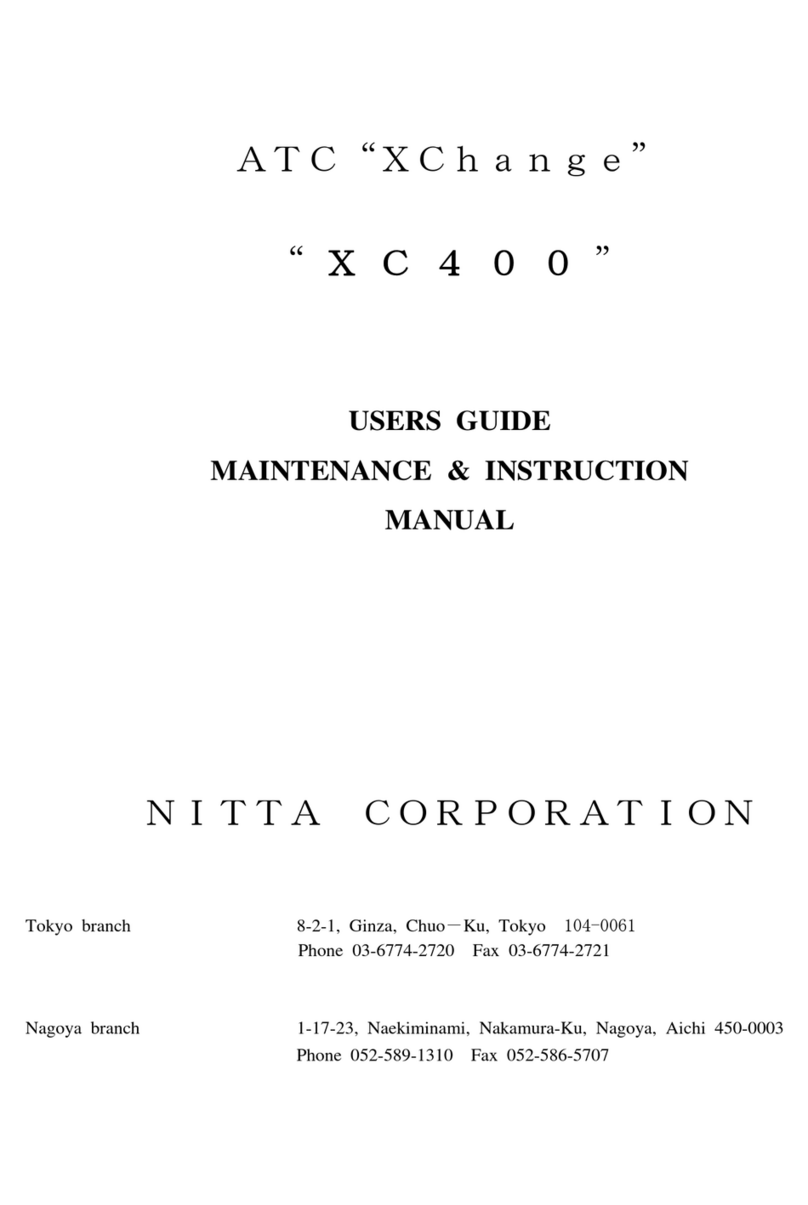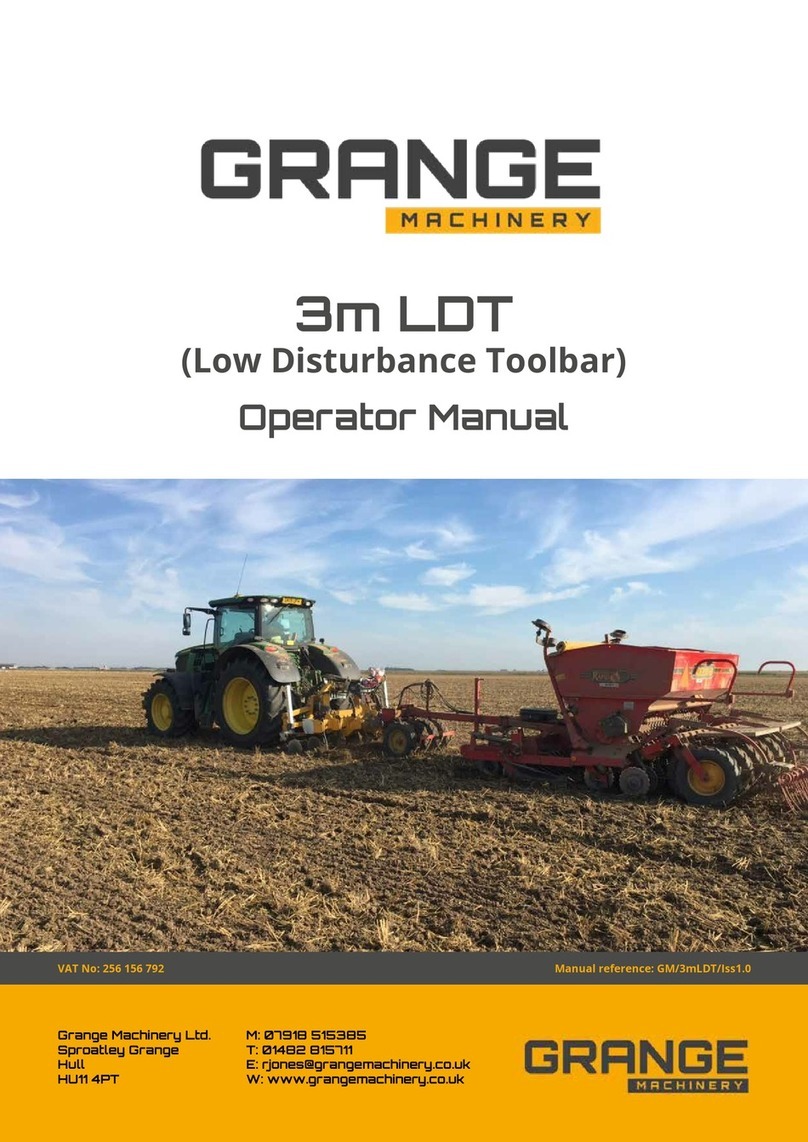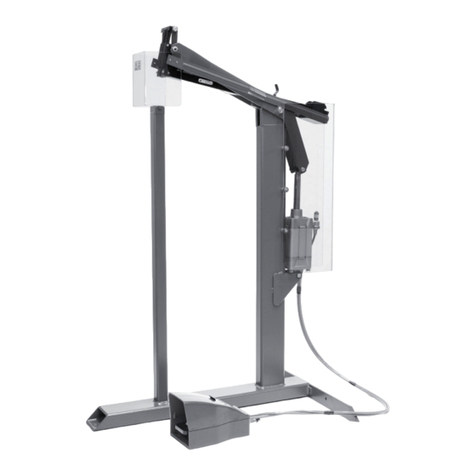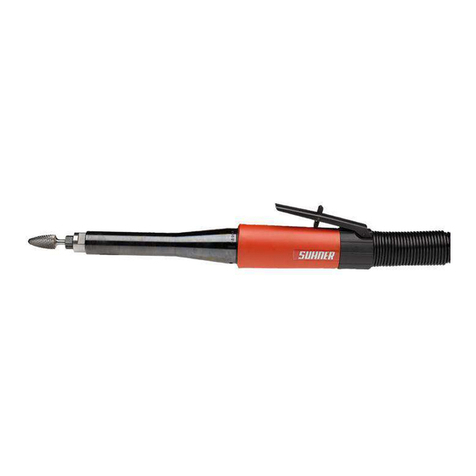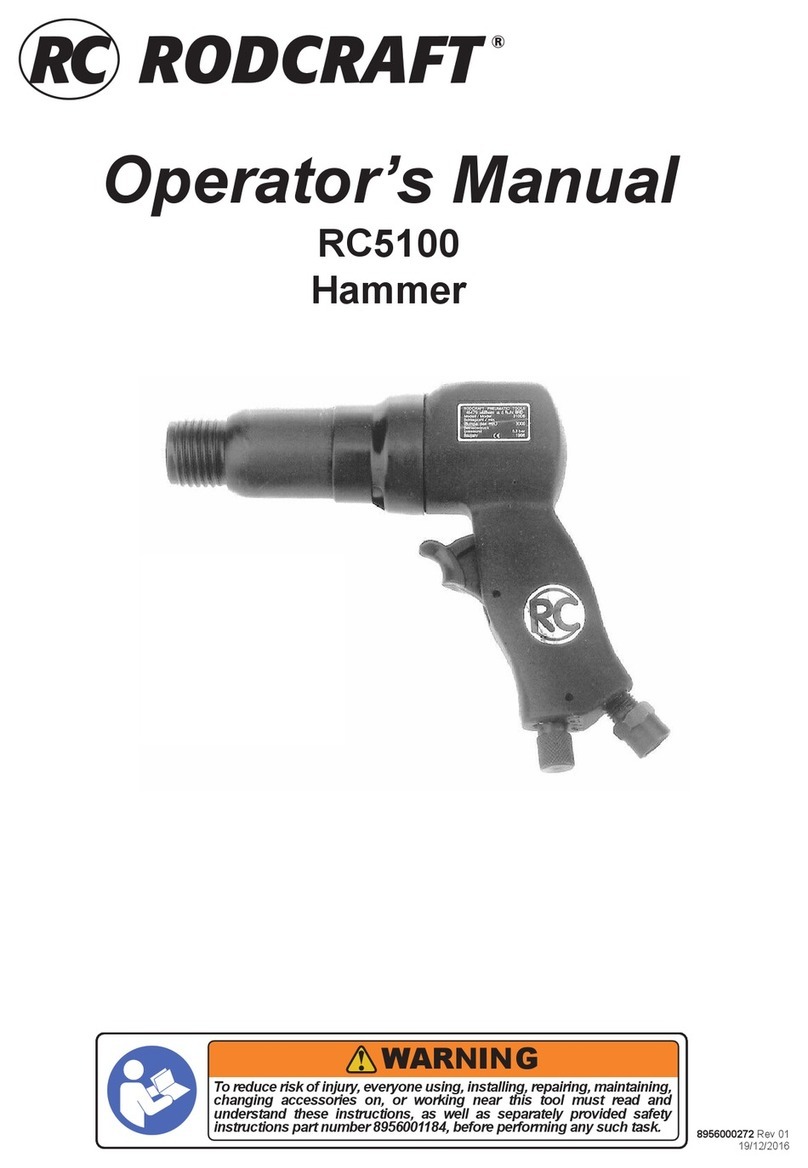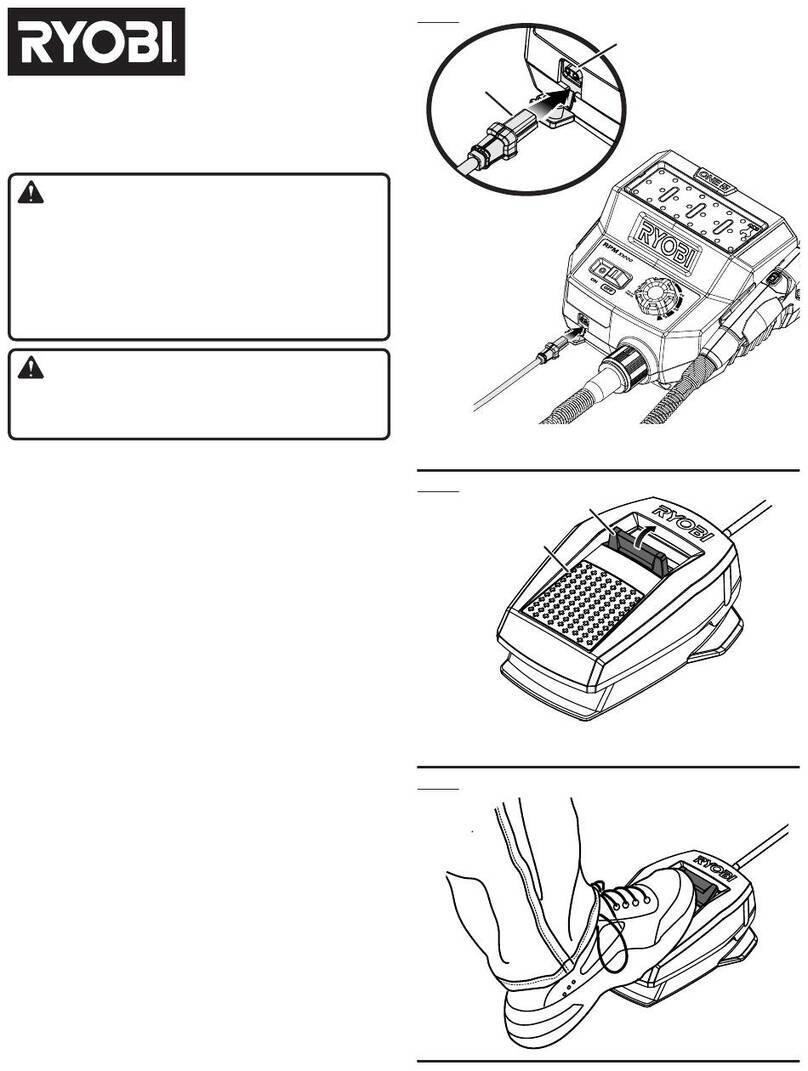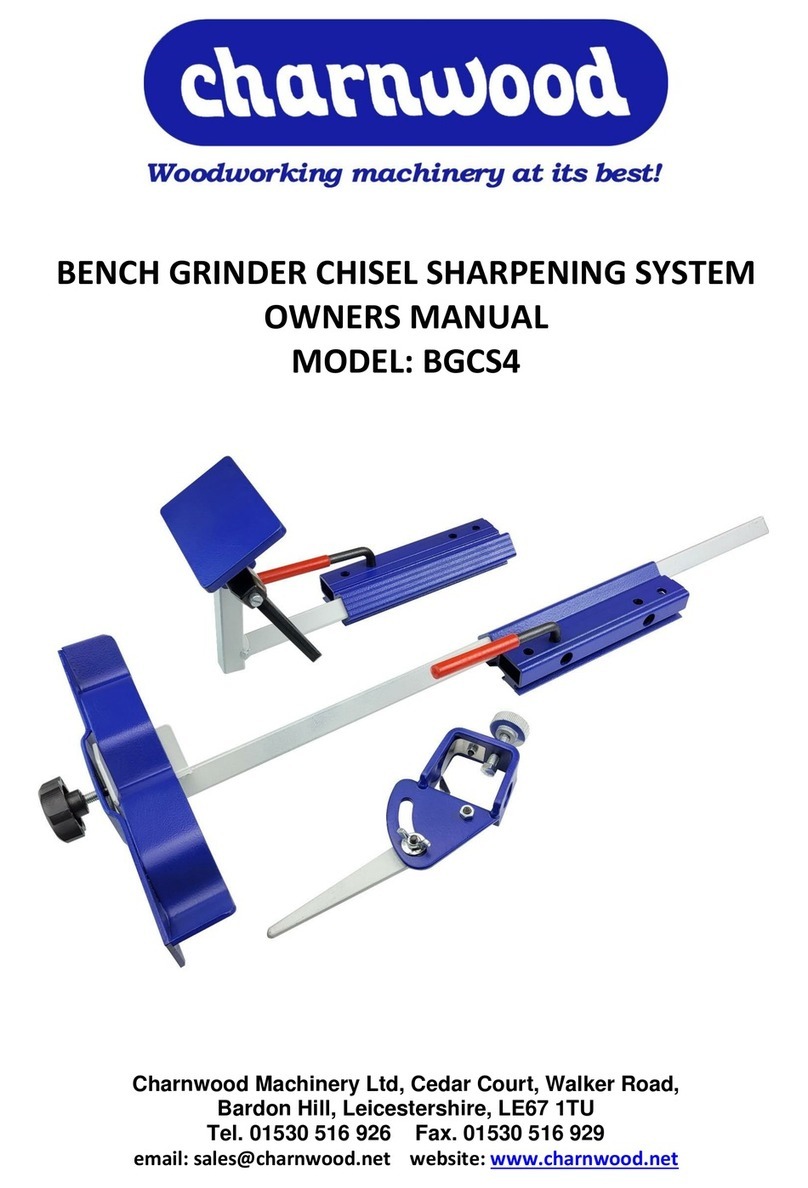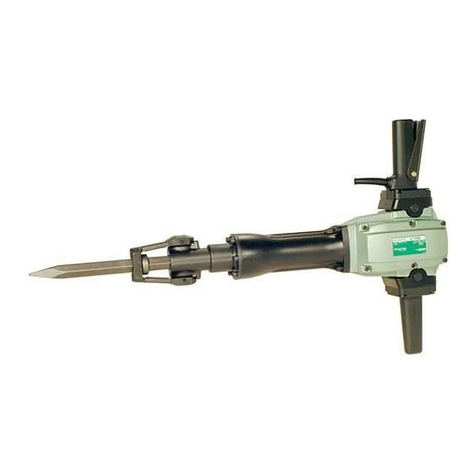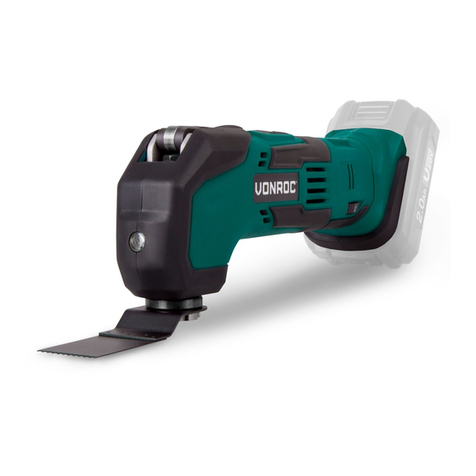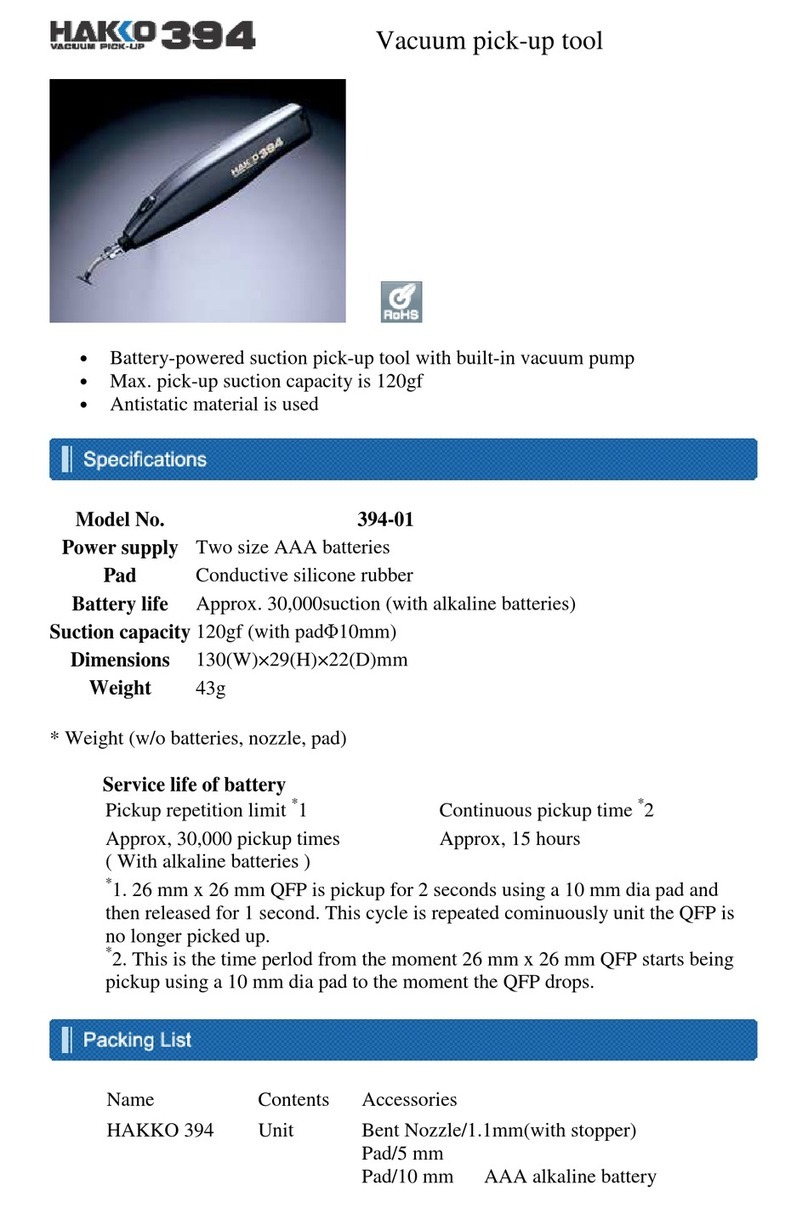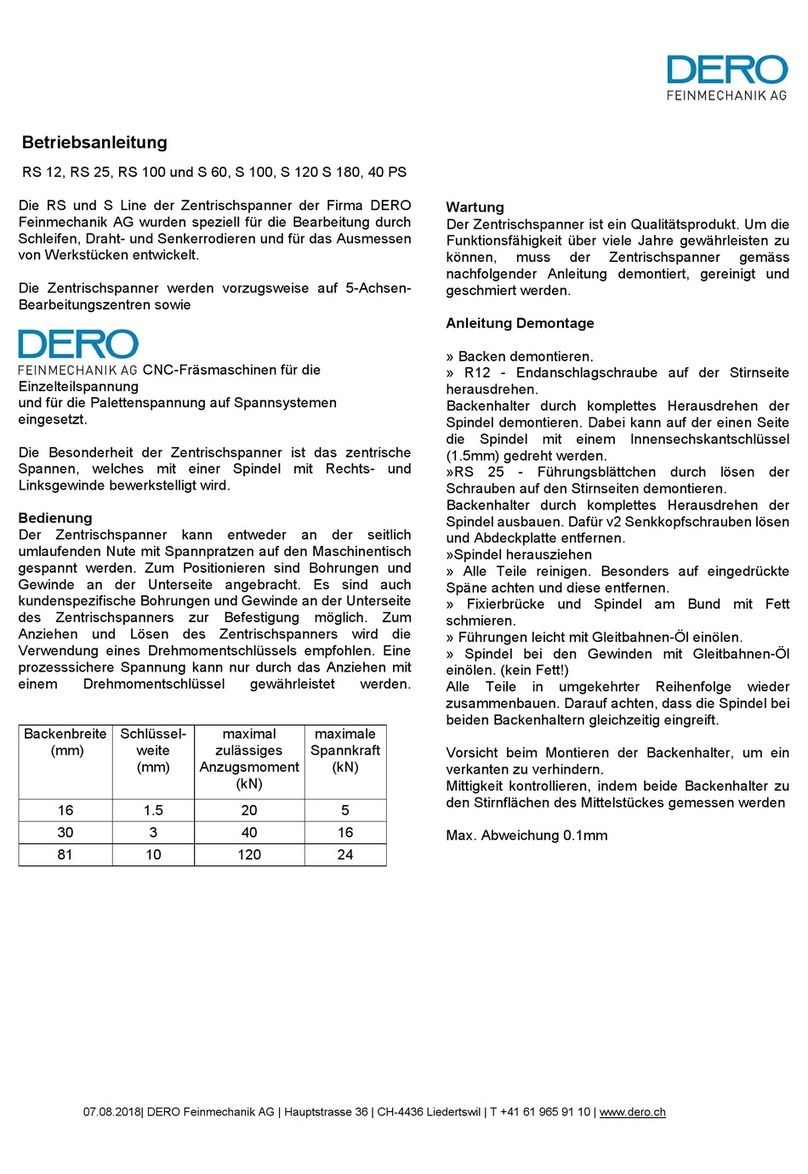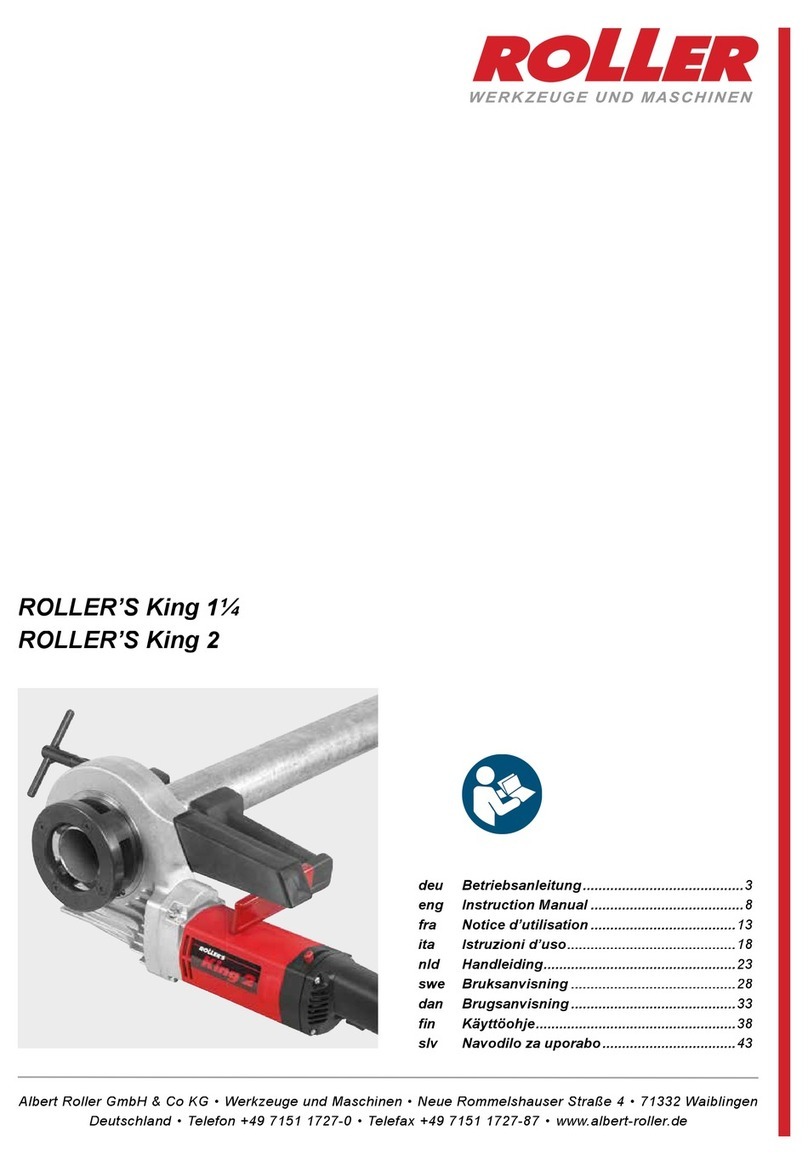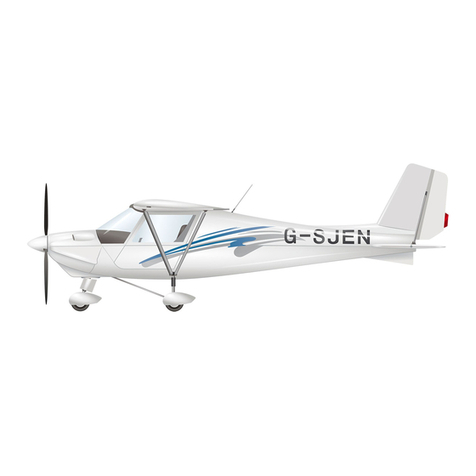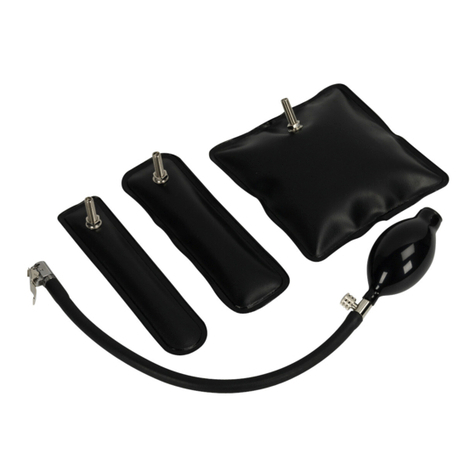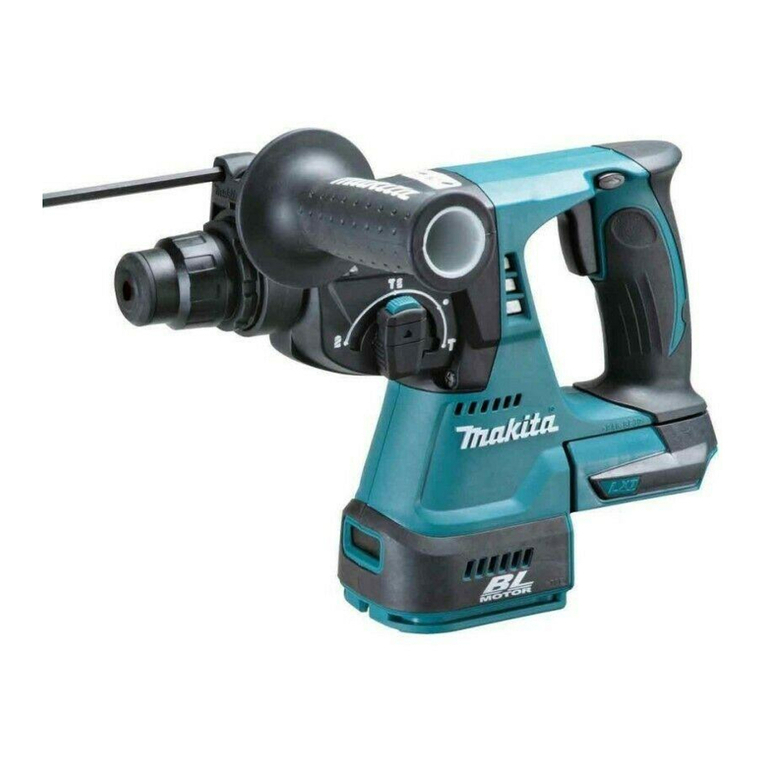Nitta NITTAOMEGA L User manual

INSTRUCTION MANUAL
Automatic Tool Changer
NITTAOMEGA type L
Nitta Corporation
Osaka HQ: 4-4-26 Sakuragawa, Naniwa-ku, Osaka, Osaka 556-0022
Tel: +81 6-6563-1273
FAX: +81 6-6563-1274
Tokyo Branch: 8-2-1 Ginza, Chuo-Ku, Tokyo 104-0061
Tel: +81-3-6744-2708
FAX: +81-3-6744-2709
Nagoya Branch: 1-17-23 Meieki-Minami, Nakamura-ku, Nagoya 450-0003
Tel: +81-52-589-1310
FAX: +81-52-586-5707
Nabari Plant: 1300-45 Yabata, Nabari, Mie 518-0494
Tel: +81-595-64-2916
FAX: +81 595-63-9527
Issued: April 2021
Revised:
Ver. No.: rev.0
Printed in Japan type L-ENOUG-00
NOTICE
For use of this document:
Please keep this document always readily available to those who use
the product. If you need an additional copy, please download the
document from our website: http: //www.nitta.co.jp/

Contents
i
Contents
Preface ................................................................................................................................................... I
Notice ..................................................................................................................................................... I
Product Warranty .................................................................................................................................. I
Unpacking and Check............................................................................................................................ I
Safety Precautions................................................................................................................................ II
1.Overview of the Automatic Tool Changer (ATC) .....................................................................1
Robot Side .............................................................................................................................. 1
Robot Adaptor................................................................................................................ 1
Selection of Input Device.............................................................................................. 2
Robot adaptor plate (optional) ..................................................................................... 3
Tool Side ................................................................................................................................. 3
Tool Adaptor................................................................................................................... 3
Tool Adaptor Plate (Optional)....................................................................................... 3
Option..................................................................................................................................... 3
2.Configuration: ..........................................................................................................................4
3.Standard Specifications...........................................................................................................5
Common Specifications ......................................................................................................... 5
ATC......................................................................................................................................... 6
ATC Specifications ........................................................................................................ 6
Internal Power Wire for ATC ....................................................................................... 7
Coupling Check End Sensor......................................................................................... 7
Chuck and Unchuck Sensor ......................................................................................... 8
LED ASSY Specifications ............................................................................................. 8
Precautions for Allowable Load and Installation ....................................................... 9
Allowable Electric Load................................................................................................ 9
Spot Welding Module (Seal Connector Specifications) ..................................................... 10
Spot Welding Module Specifications.......................................................................... 10
Power Wire for Spot Welding Module (Power).......................................................... 11
Internal Power Wire for Spot Welding Module (Earth) ........................................... 11
Spot Welding Module (Direct Cabling Specifications) ...................................................... 12
Servo Motor Module ............................................................................................................ 13
Servo Motor Module Specifications ........................................................................... 13
Internal Power Wire for Servo Motor Module........................................................... 14
Hydraulic Module ................................................................................................................ 15

Contents
ii
Pneumatic Module............................................................................................................... 16
4 Ports type specifications.......................................................................................... 16
8 Ports type specifications.......................................................................................... 17
Signal module ...................................................................................................................... 18
Fall Prevention System....................................................................................................... 19
4.Part Names ............................................................................................................................20
5.Procedures of Installation to Robot/Tool................................................................................21
Robot Adaptor ...................................................................................................................... 21
Tool Adaptor ......................................................................................................................... 21
Connecting to Fitting/Removal Port .................................................................................. 23
Electric Wiring..................................................................................................................... 25
Cable Fixing......................................................................................................................... 25
ATC Grease up..................................................................................................................... 26
Precautions for Installing ATC to a Tool............................................................................ 27
ATC Orientation.......................................................................................................... 27
Precautions for using a servo motor for a tool .......................................................... 27
Procedure for Installing Module to ATC ............................................................................ 28
Module Mounting Bolts .............................................................................................. 28
Wiring for Spot Welding Module of Direct Cabling Specifications.......................... 29
When a Servo Motor Module is used: ........................................................................ 33
When a hydraulic module is used:............................................................................. 34
When a pneumatic module is used: ........................................................................... 35
When a Signal Module is used:.................................................................................. 35
When a Fall Prevention System Is Used: ................................................................ 35
6.Operations and Programming ............................................................................................... 36
Checking before Teaching (Robot Operations) .................................................................. 36
Operations and Programming ............................................................................................ 37
Basic Flow of ATC................................................................................................................ 38
Interlocking around ATC .................................................................................................... 39
Precautions for Operations ................................................................................................. 40
Points to Check during Line Downtime (or Line Uptime)................................................ 42
Emergency Response Actions ............................................................................................. 43
Response Actions to Interference or Crash ............................................................... 43
Response Action to Water Exposure .......................................................................... 43
Precautions for Transportation.................................................................................. 44

Preface
I
Preface
Thank you for choosing Nitta Automatic Tool Changer (hereafter referred to as "ATC").
This document provides precautions for handling, detailed descriptions of the specifications and
mandate inspection and maintenance items for secure applications and appropriate maintenance
and inspection of the system, focusing on mechanical sections of ATC.
Therefore, those in charge of introduction line planning, maintenance and inspection, unpacking
or actual operations of the product must read this document and fully understand the ATC before
use.
Ensure that this document is securely delivered to end users of this product.
- All rights reserved.
- External appearance and specifications described in this document are subject to change for
improvement.
- Be sure to read this document carefully before working on the product.
- Be sure to confirm whether workers are required to be sufficiently trained for applicable expertise.
- Take note that we assume no responsibility regarding any damage or accident that occurs in works
performed by customers.
Notice
This document is only intended for customers of Nitta Corporation (hereinafter referred to as
"the company").
Technical information and drawings presented in this document are proprietary of the
company and it is prohibited to publish all or part of this document for any commercial purpose
or disclose the same to any third party without prior written consent of the company.
The contents of this document are subject to change without any prior notice. The delivered
product may not be the same as figures and photos contained herein due to any later change in
specifications.
Product Warranty
- Warranty period
1 year from the delivery date of this product or 3,000 hours of operation, whichever comes
first.
- Warranty subject
Any genuine part of the product exhibiting defect in material or manufacturing will be fixed
or serviced without charge within the warranty period.
- Exclusion
Items listed below are excluded from warranty:
(1) Any failure and accident arising out of user's negligence
(2) Consumables
(3) Any failure caused by natural disaster, accident, fire, theft or unauthorized use, etc.
(4) Any failure or accident arising out of non-conformity to maintenance and inspection
instructions set forth in this document and the maintenance and inspection procedures
(5) Any failure or accident arising out of repair, adjustment, or alteration performed by other
than Nitta engineers
(6) Any failure caused by any use of used parts
Any secondary damage such as line stoppage due to a system failure or damage arising out
thereof is also out of the warranty coverage.
Unpacking and Check
Although we exercise thorough care to eliminate wrong delivery before shipment, please
check the following items when you unpack the product for confirmation. Should there be any
defect or missing item, please contact our office indicated in the cover page of this document.
- Please check that mounting bolts are included. (See the relevant delivery specifications.)
- Please check the spare parts. (To be determined in separate meetings.)
- For details of options, e.g. special modules, please feel free to contact us.

Safety Precautions
II
Safety Precautions
For Safe Use of the Product
a) Hazard, warning and cautions indications in this document
This section describes safety precautions for proper use of the Nitta product and prevention of
injuries and property damages. These precautions are classified into three levels according to
severity of potential hazards and damages that may be caused by non-conformity thereto.
Indications in this document
Improper use disregarding this indication may lead to a hazardous situation
which may result in death or serious injury and requires urgent alerting when
such hazard is materialized.
Improper use disregarding this indication may lead to a hazardous situation
which may result in death or serious injury.
Improper use disregarding this indication may lead to a hazardous situation
which may result in minor injury or property damage.
This indicates use examples, etc.
This indicates special instructions less important than cautions.
Please note that a severe accident may occur depending on situations even when instructions in the
indications are observed. Please strictly observe the instructions.
(1) We assume no responsibilities for any damage arising out of any failure
caused by intention or negligence of customer (including software
malfunction), or any reason not attributable to Nitta, such as an accident or
natural disaster.
(2) We assume no responsibilities for any damage caused by any use not
described or prescribed in our catalogs (including the instruction manual).
(3) We assume no responsibilities for any failure alleged to be warrantable by
customers if there is no clear evidence of our responsibility.
(4) We assume no responsibilities for any incidental damage arising out of use of
or inability to use our product (including but not limited to loss of business
profit and business interruption).
b) Introduction
ATC does not work alone and is only usable when being equipped on a robot and a compatible unit.
For increased safety of the entire system, it is necessary to consider not only the single ATC but
also the robot system and compatible unit system as a whole.
For use of ATC, be sure to observe safety instructions concerning core robots and
compatible units. For any work within the robot safety fence, consider preparing
a safety system design to shut down power over 50V once any person gets into
the fenced area.
DANGER
WARNING
CAUTION
DANGER
Disclaimer

Safety Precautions
III
c) General Precautions
Personnel engaged in installation, programming and maintenance works inside
the robot safety fence for the ATC must have expertise in robot operations
(having completed expert training). In addition, those engaged in disassembly or
assembly works of the ATC, whether in or out of the safety fences, shall read this
document, installation guide, and maintenance procedures.
For works in the safety fence area, be sure to wear appropriate clothing for the
work with personal protective equipment such as a hard hat, safety boots, etc.
For internal disassembly works for the ATC, use protective glasses for protection
against pop-out parts.
Do not use this product in any of the environments listed below.
Otherwise, operators may be injured.
- Flammable environment (containing highly volatile and flammable substances)
- Environment with explosive atmosphere (e.g. combustible gas and chemical
spattering)
- Environment exposed to water/water drops or highly humid environment
- Environment with corrosive atmosphere
- Environment with high degree of radiation
When the product is used under any of the above environment, we assume no
responsibility for any failure or damage.
Also, malfunction may occur in an environment with spattering dust, chip and
cutting oil, etc.
Do not disassemble or reassemble any parts other than those mentioned in this
manual. A serious accident such as a fall may occur.
d) Precautions for Installation
For installation of the ATC, remove the pertinent product and place it out of the
robot safety fence as long as possible so that installation can be performed
securely.
If installation work is performed inside the safety fence, securely shut off the
power over 50V from the ATC and ensure that the robot is securely stopped
before entering into the fence area.
CAUTION
WARNING
WARNING
WARNING
WARNING
DANGER

Safety Precautions
IV
Be sure to check the following items before starting the installation procedure:
(a) Welding power source, control power source and driving power source are all
shut off before work.
(b) All hydraulic, pneumatic, and water pressure sources are off before work.
(c) All residual hydraulic, pneumatic, and water pressure is released before
work.
(d) Note that some connectors and cables may be hot depending
on their specifications.
Turning the power supply or hydraulic/pneumatic/water pressure source ON
during the installation work without notifying the operator(s) may create an
extremely dangerous situation. Establish a procedure to always prevent such
events for safety in work areas.
Use positioning pins when you put the ATC on robots and tools.
If it is installed without using the positioning pin, the position may
move to wrong position during use, the ATC cannot be connected and
separated reliably, and a serious accident such as dropping may occur.
If the positioning pins are unavoidable, the customer should take
measures to prevent the tool from falling due to abnormal chucking or
unchucking.
Example of countermeasures when the positioning pin cannot be used
・Perform daily inspections (checking misalignment, scratches or abnormalities
on each part such as taper pin, bush, cam, lock parts, grease application)
・Slow down the chucking / unchucking operation as much as possible
・Reliably capture the interlock signal.
Especially for the presence sensor of the stand, move to the next step after
confirming that the presence sensor of the tool is in the ON.
Be sure to install specified parts. In addition, when you replace parts, install
parts to their original positions and be sure to perform inspections in accordance
with certain procedures.
Ensure that the rated load (moment torque) does not exceed product's rated
value. Otherwise, not only the product functionality and life may be adversely
affected but also unexpected accident may occur.
Ensure that the electric load applied to the signal pin and electrode does not
exceed the rated voltage and allowable current. Otherwise, not only the product
functionality and life may be adversely affected but also unexpected accident
may occur.
Supply water and air to hydraulic/pneumatic, fall prevention system, and ATC
chuck/unchuck ports so as to maintain pressure within the rated range.
Otherwise, not only the product functionality and life may be adversely affected
but also unexpected accident may occur.
DANGER
DANGER
WARNING
CAUTION
WARNING
WARNING
WARNING

Safety Precautions
V
Make sure there is no chips of sealing tape or other dusts getting into the water
supply, air supply, fall prevention system, and ATC chuck/unchuck port.
Otherwise, not only the product function and life may be adversely affected but
also unexpected accident may occur.
- To install a robot adaptor, set the robot mounting surface facing up, rather than
horizontal. Then robot adaptor installation becomes relatively safer.
- When installing a tool adaptor, set tools on the tool stand. Then tool adaptor
installation becomes relatively safer.
Switch air supply to a chuck/unchuck port in the detached state to check that
the coupling cam motions are correct. Operating without doing this may cause
tool falling, product damage, or unexpected accident.
When manually switching air supply of the chuck/unchuck port, set tools on the
tool stand. Otherwise, improper motions or piping may cause tool falling, product
damage, or unexpected accident.
Arrange cables and tubes without causing catching during robot motions.
Otherwise, the ATC and its functional modules may be damaged.
e) Precautions for teaching
With the tool detached, check that the interlock signals output from the ATC are
correct. Operating without doing this may cause tool falling, product damage, or
unexpected accident.
For chuck/unchuck, switch air supply for chuck/unchuck with the coupling
planes of robot side and tool side adaptors are horizontally coherent on the tool
stand. Otherwise, an unexpected accident may occur due to tool falling, in
addition to damage to the ATC and its functional modules due to prying.
When the welding power is on, there is a risk of electricity leakage. Do not touch
any component connected with the ATC.
f) Precautions for Long-Term Shutdown or Transportation
g)Precautions for disposal
When disposing of this product, please comply with laws and regulations.
WARNING
WARNING
DANGER
CAUTION
WARNING
WARNING
DANGER
The failsafe mechanism serves to prevent falling. Do not continue using the
product when the air pressure is decreased. Otherwise, the gap between contact
surfaces of robot and tool adaptor is increased and unexpected accident may occur.
When the tool is left coupled by the failsafe mechanism only for a prolonged period
of time, the gap between contact surfaces of robot and tool adaptor is increased
by vibration, etc. and unexpected accident such as falling may occur.
If it is absolutely necessary to stop the air supply for a long time with the tool
coupled, be sure to take measures against falling, e.g. fixing it by rope, etc.
DANGER

1.Overview of the Automatic Tool Changer (ATC)
1
1.Overview of the Automatic Tool Changer (ATC)
A pneumatic-driven system is employed for the Nitta ATC. Basically, the ATC consists of 2
components: a robot adaptor and a tool adaptor.
The ATC is compatible with all the robot tools with respective adaptor plates (optional). In
addition, the ATC and its functional modules are equipped with transmission mechanisms such
as a signal pin to transmit signals and power source to the tool, and pneumatic port.
[ Transmission Mechanism ]
The ATC has an electric signal pin to transmit/receive signals between the robot and tool. For
the number of pins, refer to the drawing.
Robot Side
Robot Adaptor
The robot adaptor is a basic component of the ATC. Each robot adaptor is equipped with
sensors that transmit signals (chuck end signal, unchuck end signal and coupling check end
signal) to communicate its attachment conditions.
[ Chuck/Unchuck Mechanism ]
The cam mechanism to connect a robot adaptor and tool adaptor together is of a special
structure, which is designed to automatically compensate for misalignment at the time of
jointing and wear allowance to be generated over time. These cams are operated by an air
cylinder and designed not to come off under temporary loading above the rated load.
Under such load, the contact surfaces of the robot adaptor and the tool adaptor will be slightly
separated, but the adaptors will never be completely separated. Also, these cams are driven by
a spring-return pneumatic cylinder, as a fail-safe mechanism to prevent falling of the tool
adaptor even in the event of sharp reduction of the air pressure.
The failsafe mechanism serves to prevent falling. Do not continue using the
product when the air pressure is decreased. Otherwise, the gap between
contact surfaces of robot and tool adaptor is increased and unexpected
accident may occur.
When the tool is left coupled by the failsafe mechanism only for a prolonged
period of time, the gap between contact surfaces of robot and tool adaptor is
increased by vibration, etc. and unexpected accident such as falling may
occur.
If it is absolutely necessary to stop the air supply for a long time with the tool
coupled, be sure to take measures against falling, e.g. fixing it by rope, etc.
[ Chuck/Unchuck Sensor Signals ]
⚫Chuck end signal (coupling end)
Signal that indicates the cam is not fully engaged. When this signal and a coupling check signal
are both active, the robot can pick the tool adaptor from the tool stand.
⚫Unchuck end signal (detachment end)
This signal indicates that a cam to lock (couple) the robot adaptor and tool adaptor is drawn
into the robot adaptor. While this signal is active, the robot adaptor may approach the tool
adaptor freely and leave the tool adaptor after completion of tool replacement on the tool stand
safely.
⚫Coupling check end signal (face end)
This signal indicates that jointing planes of both the robot adaptor and tool adaptor are in
contact.
When coupling the adaptors, make the coupling planes of the adaptors parallel and check that
the coupling planes are sufficiently close to each other. Then operate the cam for coupling.
WARNING

1.Overview of the Automatic Tool Changer (ATC)
2
Selection of Input Device
Check specifications of the input device. Signals representing the robot
adaptor attachment condition may not be present.
The chuck/unchuck sensor signal output circuit of the unit consists of a photo coupler operated
by turning the proximity sensor ON/OFF, and serial resistor for photo coupler protection.
Therefore, the residual voltage of the signal output circuit varies depending on the input
current of the selected input device.
For input device selection, check the input current of the device and ON determination voltage
and select an input device with which ON determination is possible.
Example of [NPN: 0V common spec]: When input current value is 6 (mA)
- When chuck, unchuck are ON
Residual voltage V1 = 680 (Ω) x 6 (mA) + 0.9 + 0.8 = 5.78 (V)
- When the coupling check end is ON
Residual voltage V2 = 680 (Ω) x 6 (mA) + 1.8 + 0.8 = 7.58 (V)
Therefore, select an input device with which ON determination is possible with 8 (V) or higher
voltage relative to 0V common.
CAUTION
DC電源
(24V)
フォトカプラ
内部回路
+-GND
IN
ダイオード
0.8V
0.9V
680Ω
6mA
入力回路 オメガ4内部回路
4.08V
DC
Power Supply
(24V)
Internal circuit
Input circuit
ATC internal circuit
Diode
Photo coupler
DC電源
(24V)
フォトカプラ内部回路
+-GND
IN
ダイオード
0.8V
0.9V
680Ω
6mA
入力回路 オメガ4内部回路
4.08V
フォトカプラ
0.9V
フォトカプラ
0.9V
ATC内部回路
ATC internal circuit
Input circuit
Internal circuit
DC
Power Supply
(24V)
Diode
Photo coupler
Photo coupler
Photocoupler diode
Photocoupler Diode

1.Overview of the Automatic Tool Changer (ATC)
3
Robot adaptor plate (optional)
Conforming to the ISO flange (P.C.D.200 (M12×6)) pattern, the adaptor is mountable to a robot
flange.
They can also be mounted to various robots not compatible with the P.C.D.200 (M12×6) pattern
with a robot adaptor plate.
No drilling and threading for mounting to a robot are performed on the standard robot adaptor
plate.
(We may perform such processing upon your request. You may also prepare a robot adaptor place
on your own. When attaching the adapter plate to the robot adapter, see "5.Procedures of
Installation to Robot/Tool".)
Tool Side
Tool Adaptor
A tool adaptor is another fundamental component of the ATC, to which a tool is attached.
A tool adaptor is equipped with lock parts to be engaged with robot adaptor's locking cams.
Tool Adaptor Plate (Optional)
Conforming to the ISO flange (P.C.D.200 (M12×6) ) pattern, the adaptor is mountable to a tool
flange.
They can also be mounted to various tools not compatible with the P.C.D.200 (M12×6) pattern
with a tool adaptor plate.
No drilling and threading for mounting to a tool are performed on the standard tool adaptor
plate.
(As with the robot adaptor plate, we can offer a mounting hole drilling service following your
instructions. You may also prepare an adaptor plate on your own. For precautions for installation
of an adaptor plate onto the tool adaptor unit, please contact us.)
Option
For details of options, e.g. non-standard signal pin modules, spot welding modules, and
pneumatic modules, please feel free to contact us

2.Configuration:
4
2.Configuration:
This system is composed of the ATC (Robot Adaptor and Tool Adaptor) and additional functional
modules assembled thereto.
The signal pin ASSY is a spring-type electric contact.
Fig. 1.System diagram
Robot
Robot Side
Tool Side
Robot Adaptor
Mounting bolt ASSY
Mounting bolt ASSY
Tool Adaptor
Tool
Tool stand
Module
Module

3.Standard Specifications
5
3.Standard Specifications
Common Specifications
○Use conditions
Ambient temperature
0-60℃(no condensation)
Ambient humidity
95%RH or below (no condensation)
Ambient atmosphere
Free of corrosive gas
Altitude
1000m or less
Vibration resistance
10-500 (Hz) Acceleration: 50 (m/s2) for 110 minutes
(compliant with IEC60068-2-6)
○Transport conditions
Ambient temperature
-25-60°C (maximum instantaneous temperature: 70°C)
Ambient humidity
95%RH or below (no condensation)

3.Standard Specifications
6
ATC
ATC Specifications
Model
Robot Adaptor
See the drawing
Tool Adaptor
See the drawing
Payload
350~600kg
Allowable moment
4000Nm
Allowable torque
4000Nm
Working pressure
0.39-0.85MPa
Position reproducibility
±0.025mm
Interface
Electricity
Number of electric
contacts
See the drawing
Rated voltage
50VDC or below
Max. allowed current
3A
Overvoltage category
Overvoltage category III
Allowable pollution
level
Pollution level 3
Weight
Robot Adaptor
9.77kg
Tool Adaptor
7.94kg
Body material
Aluminum alloy
Dimensions
Robot Adaptor
See below
Tool Adaptor
See below
R side adaptor
(Refer to the delivery specifications and
drawing for details.)
T side adaptor
(Refer to the delivery specifications and drawing
for details.)
Note: Refer to the delivery specifications and drawing.

3.Standard Specifications
7
Internal Power Wire for ATC
Name
Polyester flex-resistant power wire
Model
DKHV
Nominal sectional area
0.5mm2
Conductor
Material
Annealed copper wire for electricity
Configuration:
No. of wires/wire dia.
6/18/0.08 wires/mm
Outer diameter
1.1mm
Insulation
material
Material
Heat-resistant vinyl
Withstand
voltage
Under water
2000V/5 min
Name
Polyester flex-resistant power wire
Model
DKXV
Conductor
Material
Annealed copper wire for electricity
Configuration:
No. of wires/wire dia.
6/11/0.08 wires/mm
Outer diameter
0.9mm
Insulation
material
Material
Flame-retardant polyester
Withstand
voltage
Under water
1000V/min
Sparking
5000V/0.15 sec.
Coupling Check End Sensor
Name
Anti-spatter proximity switch
Type
DC 2-wire shield type
Detection method
High-frequency oscillation
Rated power supply
voltage
12/24VDC (common)
Operating voltage
range
10-30VDC
Leak current
0.55mA or below
Operation mode
Normal open *1
Output mode
DC 2-wire; transistor output
Control output
Switching current: 3-100mA,Residual voltage: 3.0V or below
Output withstand voltage: 30VDC
Response frequency
1500Hz or above
*1: In proximity of detection object; load "operating"

3.Standard Specifications
8
Chuck and Unchuck Sensor
Name
Proximity switch
Type
DC 2-wire type or DC 3-wire type
Detection method
High-frequency oscillation
Rated power supply
voltage
12/24VDC (common)
Operating voltage
range
10-30VDC
Leak current
0.6mA or below
Operation mode
Normal open *1
Output mode
DC 2-wire or DC 3-wire type transistor output
Control output
Switching current: 3-50mA,Residual voltage: 3.0V or below
Output withstand voltage: 30VDC
Response frequency
900Hz or above
*1: In proximity of detection object; load "operating"
LED ASSY Specifications
This section describes specifications of photo couplers used in the LED ASSY equipped on the
robot adaptor. For details, please refer to the specifications, etc.
Model
TLP187 (Toshiba)
Type
Red LED + Photodarlington transistor
Dielectric voltage
3750Vrms (minimum)
Collector-emitter breakdown
voltage
300V (minimum)
Conversion efficiency
1000% (minimum) (IF=1mA)
Collector-emitter saturation
voltage
1.0V (maximum) (IC=50mA)
High temperature dark current
20μA (maximum) (Ta=85°C)
UL-certified
UL1577 (File No.E67349)

3.Standard Specifications
9
Precautions for Allowable Load and Installation
Rated load, rated moment, and rated torque in the ATC specifications are
dynamic specifications for the unit being mounted on a robot. Ensure that the
maximum load never exceeds these values during normal operations taking
into account the acceleration factor during acceleration/deceleration by the
robot. Fig. 2 shows the meanings of rated load, rated moment and rated
torque.
Payload W = 3430-5880N (350-600kg)
Eccentric distance L =
)( 22 ltlm +
Ex: Allowable bending moment M = L x W x GR(*) = 0.5 x 4600 x 1.5 ≦4000Nm
Allowable twisting torque T = Ltx W x GR(*) = 0.5 x 4600 x 1.5 ≦4000Nm
Note: GR(*) is the acceleration factor of constant acceleration/deceleration in automatic robot
operations. For specific values of robot performance, please contact the robot manufacturer
for further consideration. (Use 1.5-2.0G as a standard.)
Fig. 2. An example of rated load definition (GR=1.5/2.0)
Allowable Electric Load
WARNING
The ATC with the standard signal pin ASSY (20-pin), as an entire contact ASSY,
is capable of carrying up to 13A current. Also, each of the pins is capable of
carrying 3A current. However, when multiple signal pins are to used, do not let
3A current applied to any adjacent pin as it will cause insufficient insulation,
leading to short circuit.
CAUTION

3.Standard Specifications
10
Spot Welding Module (Seal Connector Specifications)
Spot Welding Module Specifications
Model
Robot Side
See the drawing
Tool Side
See the drawing
Weight
Robot Side
0.6kg
Tool Side
0.6kg
Body material
Voltage-proof resin
Number of electrodes
Welding power 2 pieces, Ground 1
piece, Signal 2 pieces (max)
Rated voltage
Single-phase 600VAC
Max. allowed current
130A
Rated frequency
1000Hz
Overvoltage category
Overvoltage category III
Allowable pollution level
Pollution level 3
R side spot welding
module
(Refer to the delivery
specifications and
drawing for details.)
T side spot welding
module
(Refer to the delivery
specifications and
drawing for details.)
Electrode
Electrode
Cable length (Optional)
Cable length (Optional)
Conenector
Conenector
Cable clamp
Cable clamp
Oil seals

3.Standard Specifications
11
Power Wire for Spot Welding Module (Power)
Name
Electric wires for internal wiring and for power
supply
Nominal sectional area
4AWG (21.1mm2)
Conductor (AC)
Material
Soft-copper stranded wire
Configuration:
No. of wires/wire
dia.
7/126/0.18 wires/mm
Outer diameter
6.9mm
Insulation
material
Material
Heat-resistant flexible vinyl
Withstand voltage (under water)
2000V/min
Allowable
current
(30℃)
Usage (%)
100
130A
Internal Power Wire for Spot Welding Module (Earth)
Name
Electric wires for internal wiring and for power
supply
Nominal sectional area
6AWG (13.3mm2)
Conductor (AC)
Material
Soft-copper stranded wire
Configuration:
No. of wires/wire
dia.
7/84/0.18 wires/mm
Outer diameter
5.7mm
Insulation
material
Material
Heat-resistant flexible vinyl
Withstand voltage (under water)
2000V/min
Allowable
current
(30℃)
Usage (%)
100
100A

3.Standard Specifications
12
Spot Welding Module (Direct Cabling Specifications)
Specifications
Model
Robot Side
See the drawing
Tool Side
See the drawing
Weight
Robot Side
0.6kg
Tool Side
0.6kg
Body material
Voltage-proof resin
Number of electrodes
Welding power 2 pieces, Ground 1
piece, Signal 2 pieces (max)
Rated voltage
Single-phase 600VAC
Max. allowed current
200A
※Depending on cable
specifications
Rated frequency
1000Hz
Overvoltage category
Overvoltage category III
Allowable pollution level
Pollution level 3
R side spot welding
module
T side spot welding
module
Electrode
Cable clamp
Electrode
Cable clamp
Oil seals
Table of contents
Other Nitta Tools manuals
